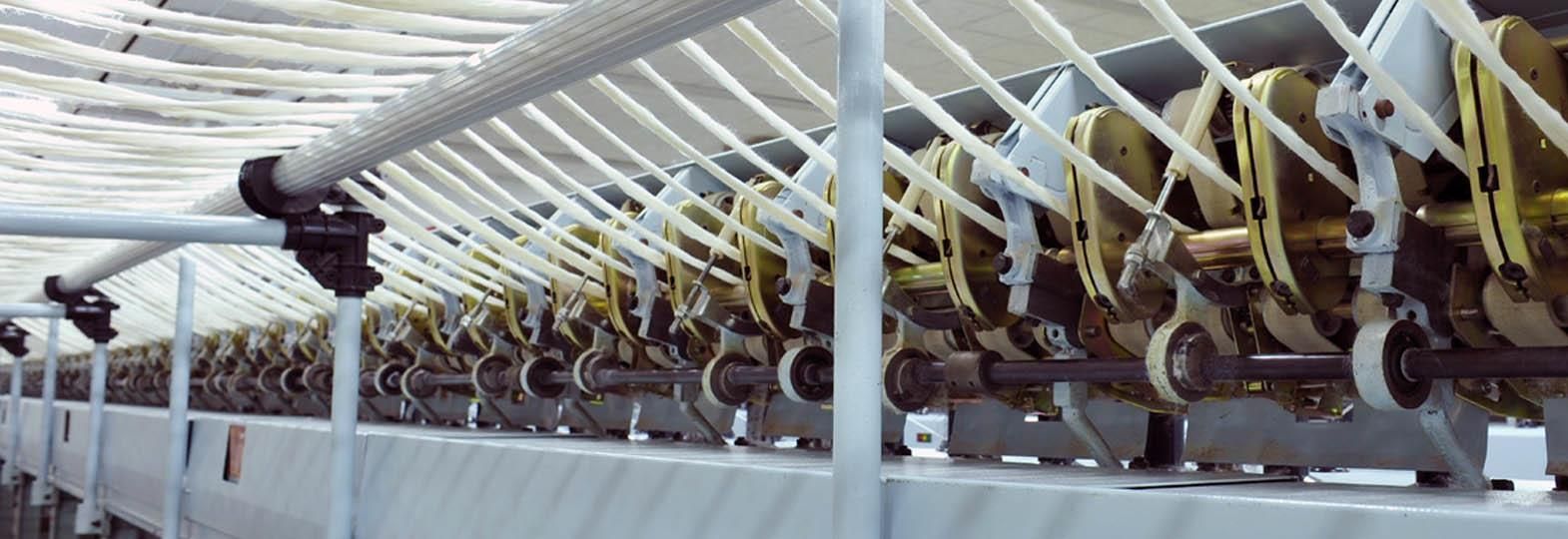Textiles is a power intensive industry, particularly when moving upstream to open-end spinning. While increased electricity rates will reduce profits for exporting countries, their dependence on coal or any other fossil fuel as the motive power will be seen as a contributor to global warming. Therefore, it is now time for the industry to remedy both.
We think of the current energy crisis as a matter of rising costs — rising demand in the face of limited supply. Our solution is to consume less and to produce more. We think the solution for our textile industry lies in greater operational efficiency coupled with investment in energy saving equipment. This would work, if the problem were related only to the cost of electricity and other power sources. Unfortunately, this is not the case.
Our global textile industry is caught up in two existential threats, neither of our making, but which each exporting industry must overcome. Both are directly related to energy.
• Global Warming
• Trade Weaponisation
Global Warming: For decades scientists have been warning us of the dangers of global warming, yet during all that time our governments have done little more than pay lip-service to the threat. At the same time, the industry’s commitment has been limited to green washing, i.e., stick a label on the product – 100% Sustainable!
2022 has been a terrible year, filled with droughts, floods, forest fires, and food shortages. Many have lost their savings, their homes, and their very lives. And this is just the beginning. 2023, 2024, 2025 each will be worse. People everywhere, but particularly in the wealthy importing countries, are becoming progressively worried, frightened, and most importantly angry. They want to blame somebody. Since they will not take the responsibility, they will blame somebody else.
We must accept that past attempts to build sustainability on a voluntary basis have failed. Pleas will be replaced by demands, particularly related to energy production and consumption.
The threat of global warming will put an end to globalisation as we know it. It will become conditional.
If your country relies on coal or any other fossil fuel as the motive force for electrification, you will be in serious trouble. If your country has a high degree of air pollution, water degradation and particulate contamination resulting in greenhouse gases, then too you are in trouble.
In either or both cases, the major importing countries will penalise you. Indeed, they may well ban your imports. The so-called ‘good guys’ — the United States, EU, Scandinavia, and the industrialised Asian countries such as South Korea and Japan — account for 75 per cent of total imports. In this new global industry, to survive you must meet the demands of the 75 per cent and work to put an end to global warming, not the 25 per cent who care little.
This is not some visionary scenario. And I do recognise that this is unfair. Indeed, the US alone is a major contributor to global warming. Their response is SO-WHAT. That is reality.
Trade Weaponisation: There was a time when national trade policies were based solely on trade. This was the simpler world of comparative advantage and mercantilism. Regrettably, this was also the world of colonialism and slavery. That world has all but disappeared.
Today global trade has become an extension of global politics. There is a new mantra:
WE TRADE WITH OUR FRIENDS, THE OTHERS CAN DROP DEAD
Regrettably, in a rapidly changing world, yesterday’s friend may become something else tomorrow. For example, the US may turn a blind eye to friendly countries importing oil from Russia. However, given the problems in Ukraine, that allowance may disappear tomorrow, depending on Russian excesses in the war.
The Textile Industry
Textiles, as opposed to garments, is a power intensive industry, particularly when moving upstream to open-end spinning. Increased electricity rates will reduce profits, while dependence on coal as the motive power will cause loss of reputation. So, the industry must move forward to remedy both.
The best solution is to leave the national grid completely and set up independent sustainable electrification. This is not a visionary concept. If carried out correctly and prudently, rather than adding to costs, the investment in sustainable electrification will be a profitable venture in itself.
In this regard, there are two possibilities, both based on the understanding that electrification is profitable when achieving economies of scale. Both are based on the premise that the goal is to produce eco-friendly electricity (e.g., solar power, wind power, etc.) far greater than the needs of a single textile company and to sell the excess in the market.
• Produce the electricity and sell the excess to the traditional electricity suppliers. This has been carried out successfully in many other countries.
• Open industrial parks which would supply eco-friendly electricity to participating companies. Because the participating companies would pay their bills on a regular basis, because there would be no subsidies, and because there would be no politics, the project would be profitable while, at the same time, prices would be below existing rates and profitable for all concerned.
The industrial park would offer other facilities required by the new operation, all benefiting from the reliable electricity source.
• Medical facilities
• Quality housing
• Support services
• Guaranteed compliance and sustainability.
In this regard, what might have begun as a way to overcome the current difficulties, providing reliable electricity, may well become a way forward, not just for a textile company but for the future development necessary to meet the requirements of the new industry.
Case Study: India
The current energy crisis is but the most recent step in India’s dysfunctional power system, which has brought interrupted power supply often forcing companies to resort to their in-house diesel generators, which are both costly and polluting. So, can there be a new initiative which will help overcome the fundamental problems facing the industry?
To understand India’s inability to provide sufficient reliable electricity to its textile manufacturing industry, we must first rid ourselves of the belief that the problem is short term, due to unforeseen circumstances and can be solved by the government’s current initiatives. Indeed, the problems are structural and systemic going back decades.
Around 70 per cent of India’s electricity is produced by coal. The actual purchase of the coal from local sources is controlled by state-governments’ distribution companies (DISCOMS), that purchase and distribute the coal to the thermal power plants and then bill customers for the electricity. These DISCOMS face serious problems. Most importantly, these problems are the direct results of lack of funds, which in turn is the direct result of circumstances beyond their control:
• More than 20 per cent of outstanding amounts due from consumers go unpaid and are unrecoverable.
• A further 30 per cent of sales are below cost as a result of government subsidies.
• The problem is further exacerbated by political parties continuously promising their voters free electricity.
The bottom line is that these DISCOMS are no longer able to provide coal in the quantities required. A recent government report stated that as of 22nd May, 109 of India’s total 165 electric power plants currently have only 0-24 per cent of the normative level of coal.
Following this report, the situation further deteriorated, when:
• Farmers required irrigation (farmers pay ‘zero’ for their electricity).
• Hot-humid weather substantially increased industrial and domestic demand.
• Coal production fell during the monsoon season.
We must expect the situation to deteriorate further. It is because as more international importers move their orders from China to India, the demand for uninterrupted power will increase. For example, Apple has recently moved much of its production for its latest iPhone 14 to India. Provided all goes well, India can expect future increases in export orders not only from Apple but from other telecommunication companies as well. This bodes well for India (or not) depending on India’s ability to meet the increasing infrastructure demands, particularly electricity.
It is therefore imperative that more than any other country in the region, India’s textile industry must move quickly, go off-grid, and supply its own eco-friendly power.









Comments